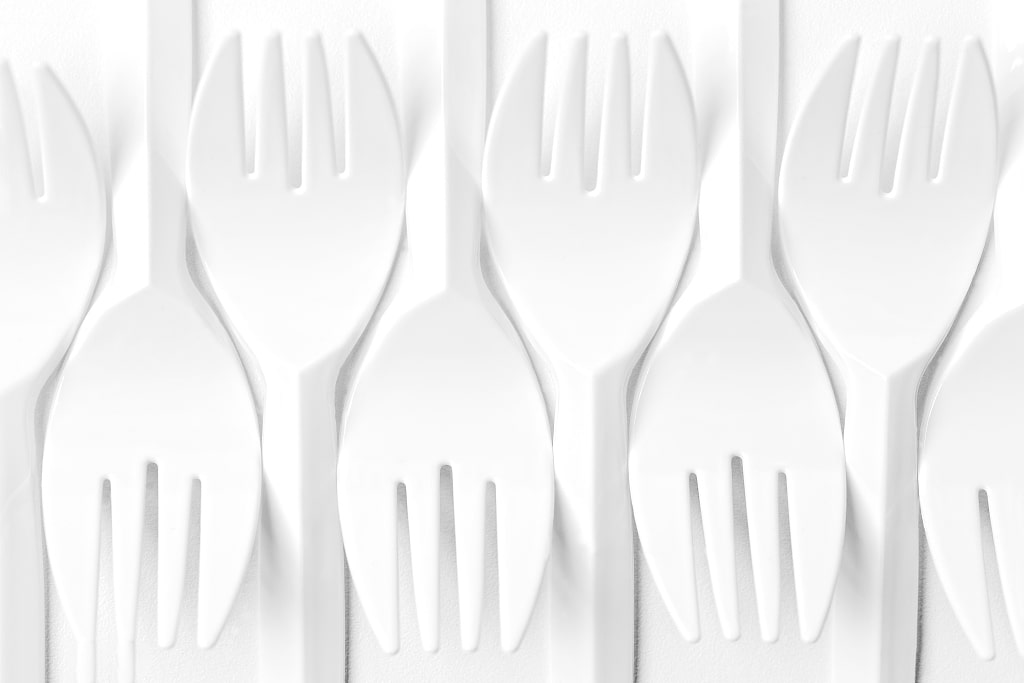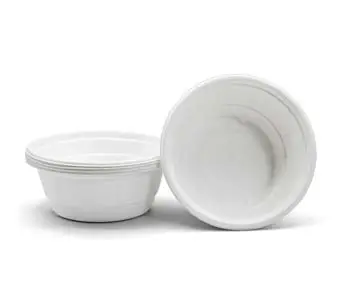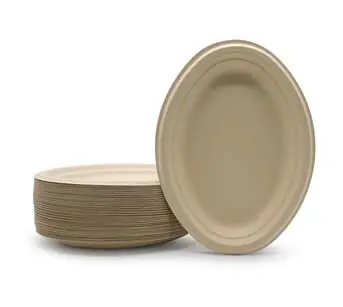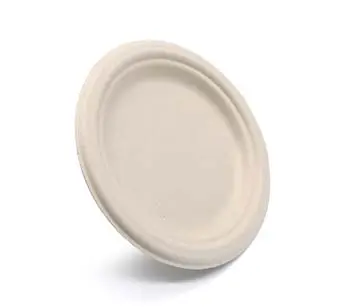In the realm of eco-consciousness, where sustainable practices are gaining traction, the quest for viable alternatives to plastic cutlery has become paramount. Plastic, notorious for its non-biodegradable nature, poses a severe threat to our environment and ecosystem.
In this context, bagasse cutlery emerges as an impressive solution that amalgamates sustainability and functionality. Derived from the fibrous residue of sugarcane after juice extraction, bagasse cutlery presents a remarkable alternative that minimizes environmental impact while offering practicality and convenience.
Sugar bagasse packaging, derived from the same sugarcane residue, complements bagasse cutlery as an eco-friendly choice for businesses. With its sustainable production process and minimal environmental impact, sugar bagasse packaging offers a practical and stylish solution for packaging needs while promoting a greener future.

Definition of Bagasse Cutlery
Bagasse cutlery refers to a range of utensils crafted from the fibrous byproduct of sugarcane known as bagasse. As sugar cane stalks are processed for their juice extraction to produce sugar or ethanol, the remaining fibrous residue undergoes further transformation into biodegradable cutlery items. These items include but are not limited to forks, spoons, knives, plates, bowls, stirrers, straws and more.
Importance of Sus4tainable and Eco-friendly Alternatives to Plastic Cutlery
The dire consequences resulting from plastic pollution have urged society to seek alternatives that align with sustainable practices. Traditional plastic cutlery contributes significantly to environmental degradation due to its resistance to decomposition. By opting for sustainable alternatives like bagasse cutlery, we can actively reduce our carbon footprint and mitigate harm caused by single-use plastics in landfills and oceans.
Overview of the Wholesale Market for Bagasse Cutlery
The demand for eco-friendly products has led to a flourishing market for wholesale bagasse cutlery. Bulk purchasing options enable foodservice providers and event organizers alike to access these utensils at competitive prices while promoting sustainable consumption on a larger scale.
Wholesale providers offer a wide range of bagasse cutlery options, catering to various requirements in terms of design, size, and quantity. The availability of bagasse cutlery in the wholesale market empowers businesses and individuals to make environmentally conscious choices without compromising on quality or functionality.
Bagasse packaging manufacturers also offer a diverse selection of eco-friendly packaging solutions that align with the sustainability principles of bagasse cutlery. By partnering with bagasse packaging manufacturers, businesses can create a cohesive and environmentally conscious presentation, from cutlery to packaging, that resonates with eco-conscious consumers.
Understanding Bagasse
Explanation of bagasse as a byproduct of sugarcane processing
Bagasse, an integral component of the sugar production process, refers to the fibrous residue that remains after sugarcane stalks are crushed to extract their juice. The extraction process typically involves shredding the cane and separating the juice from the cellulose-rich fibers. These fibers constitute bagasse, which is traditionally seen as waste material.
However, innovative thinking has transformed this byproduct into a valuable resource for sustainable industries. The abundance of bagasse stems from the fact that sugarcane is one of nature's most efficient photosynthetic plants, capable of converting sunlight into sucrose with remarkable efficiency.
Consequently, it produces large quantities of fibrous material during harvest season. This organic residue offers significant potential for recycling and repurposing.
Environmental benefits of using bagasse as a raw material for cutlery production
Utilizing bagasse as a raw material for manufacturing cutlery brings forth several noteworthy environmental advantages. Firstly, by diverting this agricultural waste from landfills and incineration facilities, we effectively mitigate potential pollution risks associated with its disposal.
Such responsible waste management helps reduce greenhouse gas emissions and prevents soil and water contamination. Moreover, compared to traditional plastic cutlery derived from fossil fuels or even compostable alternatives like cornstarch-based utensils, bagasse presents an eco-friendly option due to its renewable origin.
A non-petroleum-based resource like bagasse significantly reduces dependence on finite resources and contributes to a more sustainable future. Additionally, the production of bagasse cutlery requires less energy compared to plastic options while minimizing carbon dioxide emissions in line with ecological preservation efforts.
The use of renewable energy sources further enhances its sustainability credentials. By embracing bagasse as a raw material for cutlery production, we not only make efficient use of a byproduct but also contribute to the reduction of plastic waste and the preservation of natural resources.
Manufacturing Process
Harvesting and processing sugarcane to obtain bagasse
The manufacturing process of bagasse cutlery begins with the harvesting and processing of sugarcane. Once the sugarcane plants have reached their peak maturity, they are carefully cut down, leaving behind the tall stalks. These stalks, known as cane, are then transported to sugar mills for further processing.
At the mill, the cane is crushed to extract its juice, which is used to produce sugar and other related products. After this extraction process, what remains is a fibrous material called bagasse.
Bagasse is essentially the dry pulpy residue that remains after all the valuable sugars have been extracted from the cane. This waste material has traditionally been discarded or burned in many industries; however, its potential as a sustainable resource has been recognized in recent years.
Now, bagasse is gaining popularity as a sustainable material for food packaging. With its natural resistance to grease and heat, bagasse food packaging offers a reliable and eco-friendly option for businesses seeking to reduce their environmental impact while ensuring the safety and quality of their products.
Pulping and bleaching techniques used in the production process
To convert bagasse into suitable raw material for cutlery production, it undergoes a series of pulping and bleaching techniques. Pulping involves breaking down the bagasse fibers through mechanical or chemical means to create a pulp-like substance that can be molded into various shapes.
Mechanical pulping utilizes physical forces such as grinding or refining to separate fibers from each other while retaining their original appearance and texture. On the other hand, chemical pulping involves treating bagasse with chemicals like sodium hydroxide or hydrogen peroxide to break down lignin and separate fibers from each other more effectively.
Once pulping is complete, an additional step called bleaching may be performed to enhance cleanliness and aesthetics of the final product. Bleaching agents like hydrogen peroxide or chlorine dioxide are applied carefully under controlled conditions to remove any remaining impurities from the pulp while ensuring minimal environmental impact.
Molding and shaping methods to create various types of cutlery items
After bagasse pulp has been obtained and processed, it is ready to be molded and shaped into the desired cutlery items. There are various techniques employed in the industry to achieve this, including thermoforming and injection molding.
Thermoforming involves heating the bagasse pulp to a malleable state and then pressing it into molds using vacuum or pressure. This method allows for intricate designs and customization options, ensuring that different types of cutlery can be produced according to specific requirements.
Injection molding, on the other hand, involves injecting molten bagasse pulp into pre-designed molds under high pressure. This method is especially suitable for producing large quantities of uniform cutlery items with consistent quality and dimensions.
Both molding techniques ensure that bagasse cutlery retains its strength, durability, and functionality necessary for everyday use. The resulting products showcase the versatility of bagasse as a raw material for manufacturing sustainable alternatives to plastic-based disposable utensils.
Biodegradability and Compostability: Reducing Environmental Impact
One of the primary advantages of bagasse cutlery lies in its biodegradability and compostability, offering a commendable solution to the ever-growing concern of plastic pollution. Unlike traditional plastic cutlery, which takes hundreds of years to decompose, bagasse cutlery is derived from natural plant fibers that can be broken down by microorganisms relatively quickly.
This significantly reduces the burden on landfills and helps prevent the accumulation of non-biodegradable waste. Moreover, bagasse cutlery can also be composted, further enhancing its eco-friendliness.
When disposed of in a proper composting facility, it breaks down into nutrient-rich organic matter that can be used to enrich soil health and support sustainable agricultural practices. By choosing bagasse cutlery over plastic alternatives, individuals and businesses contribute to a more circular economy and actively promote environmental stewardship.
Heat Resistance and Durability: Suitable for Hot or Cold Food Items
Another notable advantage offered by bagasse cutlery is its exceptional heat resistance and durability. Whether you're serving piping hot soup or icy cold desserts, bagasse utensils demonstrate remarkable resilience in diverse temperature conditions. The robust nature of bagasse material ensures that it remains sturdy even when exposed to high temperatures without softening or deforming.
This heat resistance makes bagasse cutlery ideal for use in various food establishments such as restaurants, cafes, or catering services that cater to both hot and cold dishes. It guarantees a pleasant dining experience without concerns about utensils warping or losing their functionality due to extreme temperatures.
Natural Appearance and Texture: Enhancing the Dining Experience
In addition to being environmentally friendly and functional, bagasse cutlery also boasts a natural appearance and texture, elevating the overall dining experience. The earthy tones and organic texture of bagasse give it a distinctive and pleasing aesthetic that enhances the visual appeal of any table setting.
Compared to plastic alternatives that often have an artificial and impersonal feel, bagasse cutlery provides a more authentic and tactile experience. Its natural texture not only adds a touch of sophistication but also replicates the feel of traditional utensils, creating a sense of connection with the origins of food and nature.
Moreover, the unique appearance and texture lend themselves well to various dining occasions, from casual gatherings to formal events such as weddings or conferences. Bagasse cutlery's ability to enhance aesthetics while aligning with sustainable values makes it an increasingly popular choice among environmentally conscious individuals seeking both practicality and style in their dining experiences.
Types of Bagasse Cutlery Available in Wholesale Market
Forks, Spoons, Knives: Different Sizes and Designs to Meet Diverse Needs
When it comes to bagasse cutlery, wholesalers offer a wide array of options to cater to the diverse needs of consumers and businesses alike. Forks, spoons, and knives are available in various sizes and designs.
Whether you require a sturdy dessert spoon or an elegant dinner fork, the wholesale market has got you covered. From petite teaspoons for stirring coffee to larger soup spoons for hearty meals, there is a size suitable for every occasion.
The designs range from classic and sleek to modern and trendy, ensuring that your table setting exudes both functionality and aesthetic appeal. With the versatility offered by these different types of utensils, bagasse cutlery proves its suitability for all dining experiences.
In addition to bagasse cutlery, businesses can also find packaging options from bagasse packaging manufacturers to complete their sustainable dining experience. These manufacturers offer a range of eco-friendly packaging solutions that complement bagasse cutlery, ensuring a cohesive and environmentally conscious presentation of meals.
Sporks: Innovative Combination of Spoon and Fork
Innovation has found its way into the world of cutlery with the introduction of sporks – a clever amalgamation of spoons and forks. These versatile utensils serve as an ideal solution when simplicity is key but versatility is desired. Sporks are perfect for enjoying not only soups or stews but also salads or pasta dishes that require both stabbing and scooping motions.
The unique design eliminates the need for multiple utensils on your tray or plate while reducing waste at the same time. With sporks in your inventory, you can streamline your operations without compromising on customer satisfaction.
Stirrers, Straws Plates, Bowls: Comprehensive Range for Complete Tableware Solutions
Wholesale suppliers understand the importance of providing comprehensive tableware solutions made from sustainable materials like bagasse. In addition to traditional cutlery items such as forks and spoons, they offer a diverse range of other essentials, including stirrers, straws, plates, and bowls.
Stirrers made from bagasse are a perfect eco-friendly alternative to plastic ones when it comes to stirring beverages like coffee or tea. Bagasse straws provide a guilt-free sipping experience and are suitable for both hot and cold drinks.
Plates and bowls made from bagasse offer durability and sturdiness to hold various types of meals. With these comprehensive options available in the wholesale market, businesses can confidently switch to bagasse cutlery as an all-encompassing solution for their tableware needs.
The wholesale market for bagasse cutlery offers an extensive range of options to cater to different needs. From forks, spoons, and knives in various sizes and designs to innovative sporks that combine functionality with simplicity, wholesalers ensure that every dining experience is well-equipped.
Additionally, the range extends beyond traditional cutlery items to include stirrers, straws, plates, and bowls made from bagasse – providing a complete tableware solution that is both environmentally conscious and aesthetically pleasing. Embracing this diverse selection allows businesses to enhance their sustainability efforts while meeting the diverse expectations of customers across various industries.
Applications
Food Service Industry: Restaurants, Cafes, Catering Companies
The food service industry is one of the primary sectors that can benefit greatly from the use of wholesale bagasse cutlery. Restaurants, cafes, and catering companies are often faced with the challenge of serving a large number of customers while maintaining sustainable practices. Bagasse cutlery offers an ideal solution as it combines functionality with eco-friendliness.
Its heat resistance makes it suitable for serving hot and cold meals alike, ensuring that customers can enjoy their food without any concerns about the utensils melting or warping. Moreover, bagasse cutlery's natural appearance and texture provide a delightful dining experience for customers.
Its sturdy construction allows for comfortable handling and prevents any unpleasant accidents during meals. By incorporating bagasse cutlery into their operations, food service establishments can proudly communicate their commitment to sustainability to their patrons.
Events and Parties: Weddings, Birthdays, Conferences
When it comes to organizing events and parties such as weddings, birthdays, or conferences, hosts must consider not only the enjoyment of guests but also the environmental impact of their choices. Wholesale bagasse cutlery presents a fantastic alternative to traditional plastic utensils in such settings. The versatility of bagasse cutlery allows hosts to cater to diverse needs without sacrificing elegance or environmental consciousness.
From formal dinners to casual gatherings, this eco-friendly option seamlessly blends with any event theme or style while significantly reducing plastic waste. Furthermore, its biodegradability ensures that even after the event has concluded, no harmful residue will remain in landfills or ecosystems.
Takeaway/Delivery Services: Food Trucks, Online Food Platforms
In recent years, there has been an exponential growth in takeaway and delivery services, with food trucks and online food platforms becoming increasingly popular. These businesses heavily rely on disposable cutlery to serve their customers' on-the-go meals. However, the environmental impact of single-use plastic cutlery cannot be overlooked.
Wholesale bagasse cutlery offers an excellent solution for takeaway and delivery services. Its durability allows for secure packaging while ensuring that customers can enjoy their meals without worry about flimsy utensils.
Moreover, the eco-friendly nature of bagasse cutlery aligns with the values of sustainable and conscious consumers who opt for these convenient meal options. By choosing bagasse cutlery, takeaway and delivery services can contribute to a greener future by reducing plastic waste generated through their operations
Opting for wholesale bagasse cutlery offers a myriad of advantages over traditional plastic alternatives when considering both cost and environmental impact. Although initial costs may differ slightly between these options, the long-term benefits derived from using bagasse as a raw material far outweigh any temporary savings associated with conventional plastics.
By investing in bagasse cutlery, businesses not only contribute towards environmental sustainability but also position themselves as responsible entities committed to making positive changes. It is an investment that pays off not only in terms of cost savings but also in building a greener future for generations to come.





